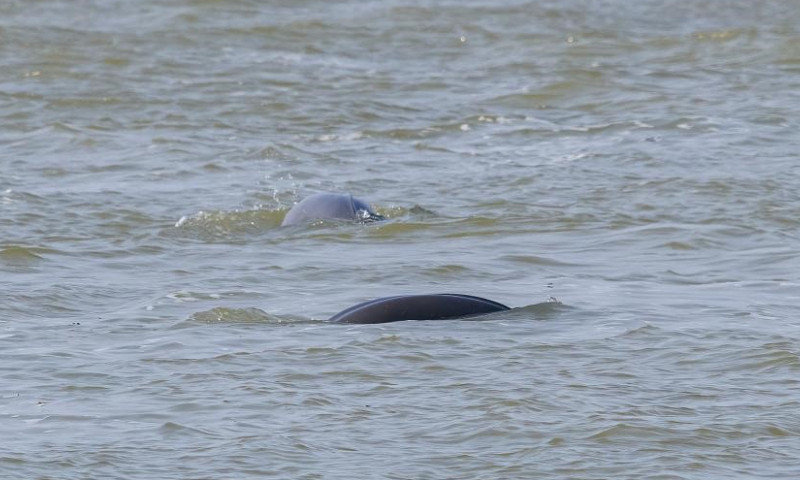
Newsroom
China's Unique 'Smiling Angel' Porpoises Released into Yangtze River

Yangtze finless porpoises are seen in the Yangtze River in Nanjing of East China's Jiangsu Province on February 19, 2023. Photo: IC
Four Yangtze finless porpoises were released into the Yangtze River on Tuesday after being cared for in the National Nature Reserve for Baiji Dolphins in Hubei Province, as part of relocation and protection efforts for the unique species, according to the Xinhua News Agency.
This action is of great significance in promoting the recovery of the natural population of this species and advancing the development of conservation technology, read the report.
The Yangtze finless porpoise is a first-class national protected wild animal in China. According to a scientific survey organized by the Ministry of Agriculture and Rural Affairs in 2022, the population of the porpoises has achieved a historic turnaround from overall population decline to growth, with a current population of 1,249, up from 1,012 in 2017.
Significant progress has been made in the translocation protection program for the Yangtze finless porpoise. The National Nature Reserve of Tian'e Zhou in Central China's Hubei Province, which is dedicated to the conservation of this species, has successfully bred and translocated over 100 Yangtze finless porpoises.
The Yangtze finless porpoise is called the "smiling angel" in China because its mouth appears to be fixed in a permanent grin. After its better-known cousin, the Baiji dolphin, was declared "functionally extinct" in the same waters in 2007, experts believe the finless porpoise is the Yangtze's last surviving mammal.
The ongoing improvement of the ecological environment in the Yangtze River Basin and the rapid growth of the population of relocated Yangtze finless porpoises have provided favorable conditions and solid foundations for the release of these porpoises into the wild through relocation conservation efforts.
The four Yangtze finless porpoises released into the wild this time were all from the National Nature Reserve for Baiji Dolphins in Changjiang Swan Island in Hubei Province. Among them, two male Yangtze finless porpoises around five years old were released after undergoing two years of adaptation training, and they have adapted well to the natural water environment of the Yangtze River.
After the four were released into the Yangtze River, scientists will carry out three months of location tracking, continuous monitoring, and evaluation of their adaptation ability and health condition. If they do not adapt well to the wild environment, the relevant departments will take necessary protective measures in a timely manner.
Hao Yujiang, associate researcher at the Institute of Hydrobiology of the Chinese Academy of Sciences, said that the release of the relocated finless porpoises into the Yangtze River will help to sustainably restore the natural population of the species and improve the genetic diversity of the population.
Following the reintroduction and safety monitoring of the finless porpoises, technical specifications will be summarized and compiled to further promote the scientific, standardized, and normalized procedures for the finless porpoise reintroduction work, Hao noted.